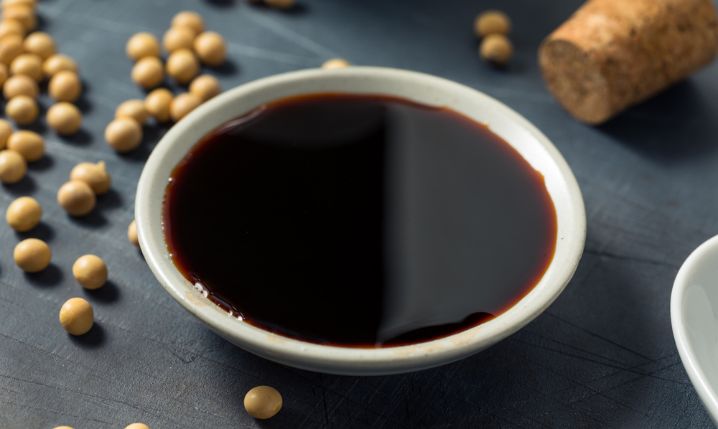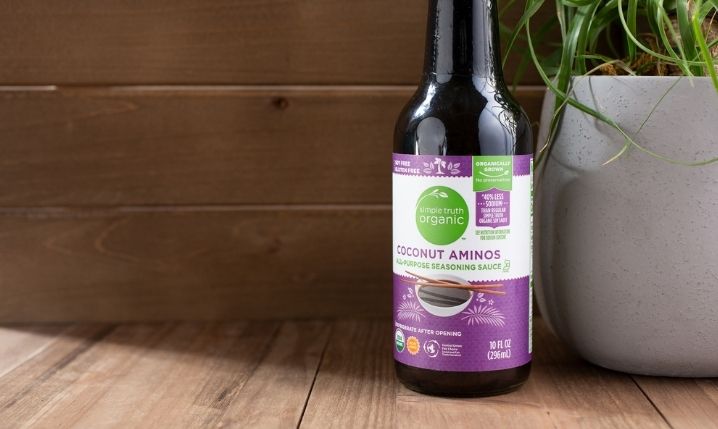With such a wide variety of sauces out there, you sometimes need to find out the differences between each other to make an informed decision about which to use. Or sometimes, you simply need a substitute. In this article, we’ll compare tamari vs. coconut aminos so you can find out all you need to know.
Contents:
What Is Tamari?

Also known as tamari shoyu, tamari sauce is the “original” Japanese soy sauce variation. Like all soy-based sauces, it is made from fermented soybean paste by pressing the paste to extract the liquid that then makes the sauce.
Tamari has a thick consistency and is a dark-rich brown in appearance. The rich, savory taste is known as umami flavor, but it is more nuanced than Chinese soy sauces with a far less salty flavor.
It’s a great gluten-free, low-sodium alternative to regular soy sauce, and the organic brands are also reputed for being MSG-free.
You can use tamari as a dipping sauce for dumplings, sushi, sashimi, and similar dishes. It also works well with noodles, rice, stir-fries, and similar Asian classics.
What Are Coconut Aminos?

Coconut aminos are a popular all-purpose seasoning sauce and dipping sauce. Often used as an alternative to soy sauces because of being soy-free, it’s great for those with soy allergies.
They contain fermented coconut-blossom nectar, or “sap,” which is then blended with sea salt to create the delicious and sometimes intense flavor that works excellently as an alternative to many other sauces you can pick up at the grocery store.
In addition to being soy-free, coconut aminos are also gluten-free and MSG (Monosodium Glutamate) free.
The consistency is fairly thin, while the color is dark-brown like tamari.
In terms of taste, coconut aminos have a similar taste to soy sauce, with a salty umami flavor. However, they’re also slightly sweet and don’t have the same level of saltiness as soy sauce. Coconut aminos do not taste like coconut, which is a common question people have.
You can use coconut aminos as a dipping sauce, or you can use it in salad dressings and marinades for meat. It also works well in rice, noodle, and other Asian recipes.
What’s The Difference Between Tamari and Coconut Aminos?
| Tamari | Coconut Aminos |
|---|---|
| Created from soybean paste. | Created from coconut-blossom nectar. |
| Gluten-free, MSG-free (organic brands). | Gluten-free, MSG-free, Soy-free. |
| Rich, savory, nuanced flavors. | Savory, sweet, mildly salty flavors. |
| Thick consistency. | Thin consistency. |
The main difference between tamari and coconut aminos is the base ingredient, with tamari containing soy and coconut aminos being soy-free. It’s for this reason that coconut aminos are a better all-round option for those with serious intolerances and allergies.
In terms of taste, they’re similar, but tamari is less salty, while coconut aminos have a slight sweetness that tamari doesn’t.
If you’re concerned about the consistency of the two, then coconut aminos are more similar to regular soy sauce, while tamari is thicker.
That being said, you can use them in many of the same situations. Neither makes the perfect substitute for the other, but they are more than acceptable substitutes for most dishes.
- Consistency: Tamari has a thicker consistency than coconut aminos.
- Appearance: Despite tamari having a thicker consistency, it looks almost identical to coconut aminos. Coconut aminos have a rich dark-brown color, the same as tamari.
- Taste and flavor: Both have an umami flavor that makes them suitable alternatives for one another in many situations. However, tamari isn’t as sweet or salty as coconut aminos.
- Culinary uses: You can use tamari as a dipping sauce, marinade, and stock. This means it works well in numerous dishes. Coconut aminos work well in all the same situations but are also frequently used in salad dressings and for making unique marinades for beef and other meats.
Conclusion
Both tamari and coconut aminos are often recommended as alternatives to soy sauce. While neither contains gluten nor MSG, coconut aminos offer an additional health benefit as they don’t contain soy. Despite not being the perfect substitutes for one another, they make great replacements for each other in numerous dishes and recipes. You now know all you should about tamari vs. coconut aminos when it comes to chowing down on the next recipe you cook up!